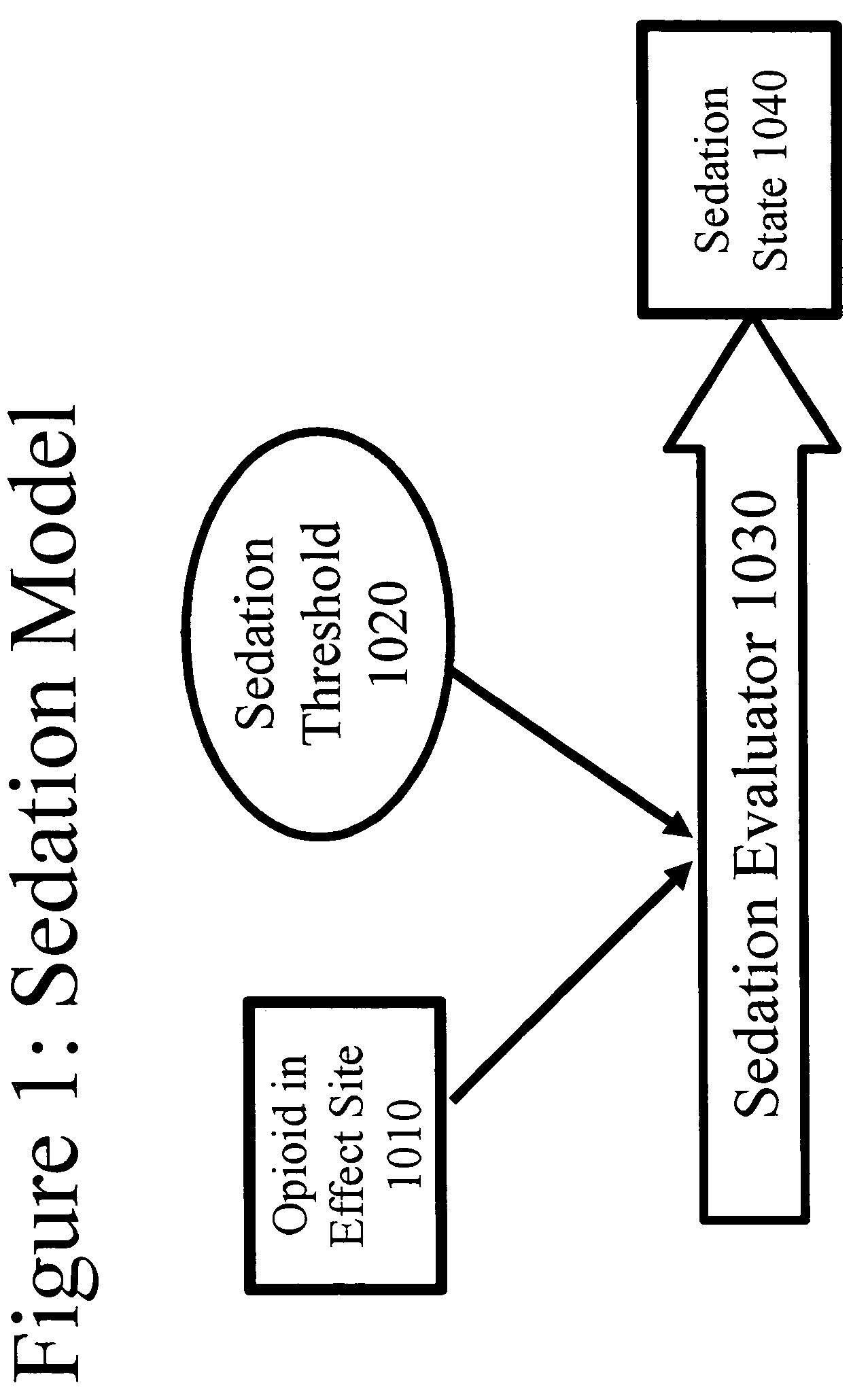Opioid delivery system
a delivery system and opioid technology, applied in the field of pharmaceutical preparations, can solve the problems of short-lived drug effect, prolonged effect, and slow metabolism of opioids, and achieve the effect of producing both profound levels of analgesia
- Summary
- Abstract
- Description
- Claims
- Application Information
AI Technical Summary
Benefits of technology
Problems solved by technology
Method used
Image
Examples
example 1
Theoretical Model for Opioid Delivery
[0221]Examples 2-4 are based on a theoretical model for opioid delivery; this theoretical model is described for greater certainty here in Example 1.
[0222]The theoretical model for opioid delivery was programmed into the computer simulation package STELLA® (High Performance Systems, Lebanon, N.H.). The elements shown in this example, both in figures and in text, are adapted from the STELLA® model representation, and explain both the programming of the simulation, and how the simulation works.
[0223]In the figures, rectangles represent variables that indicate accumulation of a substance (with exceptions noted below). Open arrows represent flow into or out of the accumulators, and closed arrows represent the elements that control the flow. Some closed arrows are omitted for simplicity of representation. Ovals represent model parameters (inputs) and time-independent calculations. Many model parameters and constants were obtained from the prior art (s...
example 2
Administration of a Single Opioid
[0234]This example is an application of Example 1: Theoretical Model for Opioid Delivery. This example is meant to illustrate the Theoretical Model for Opioid Delivery in use; the model parameters do not reflect any specific opioid. Instead, the model parameters in this example have been designed to clearly demonstrate the self-limiting aspect of the proposed system of opioid delivery. This Example shows the integration of the four simulations as described in Example 1, and output from the model when the simulation is run.
(a) Integration of the Model
[0235]FIGS. 5A and 5B show the elements of the model as described in Example 1, wherein a single opioid is administered through inhalation. FIG. 5 is split into two parts: FIG. 5A and FIG. 5B. FIG. 5A encompasses: a Device Model 5010 that is equivalent to the Device Model shown and explained in Example 1 as the whole of FIG. 3; a Pharmacokinetic Model 5020 that is equivalent to the Pharmacokinetic Model s...
example 3
Administration of Two Opioids
[0254]In this simulation, the model parameters do not reflect any specific opioids, but have been adjusted to demonstrate clearly the self-limiting aspect of the proposed system of opioid delivery. The simulation models and measures the same variables, this time for an opioid composition comprising of two different opioids with different pharmacokinetics.
(a) Building a Two Opioid Model.
[0255]FIG. 12 addresses how two opioids are combined into a single opioid concentration for the model. In the two opioid simulation, Rapid Opioid In Effect Site 12010 represents the concentration of rapid onset opioid; Slow Opioid In Effect Site 12020 represents the slow onset opioid. Each of these is determined in parallel and in the same manner as in the one opioid model (Example 2). However, each is determined separately, then combined to determine Combined Opioid Effect Site Concentration 12030. Combined Opioid Effect Site Concentration 12030 is calculated using the kn...
PUM
| Property | Measurement | Unit |
|---|---|---|
| mass median aerodynamic diameter | aaaaa | aaaaa |
| mass median aerodynamic diameter | aaaaa | aaaaa |
| mass median aerodynamic diameter | aaaaa | aaaaa |
Abstract
Description
Claims
Application Information
 Login to View More
Login to View More - R&D
- Intellectual Property
- Life Sciences
- Materials
- Tech Scout
- Unparalleled Data Quality
- Higher Quality Content
- 60% Fewer Hallucinations
Browse by: Latest US Patents, China's latest patents, Technical Efficacy Thesaurus, Application Domain, Technology Topic, Popular Technical Reports.
© 2025 PatSnap. All rights reserved.Legal|Privacy policy|Modern Slavery Act Transparency Statement|Sitemap|About US| Contact US: help@patsnap.com



